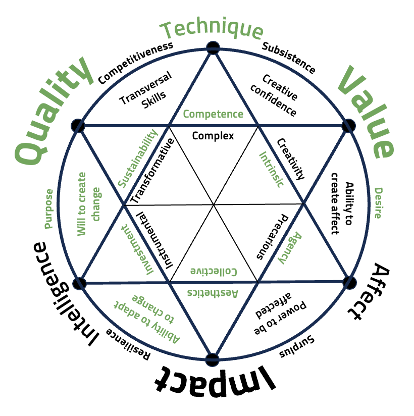
Certainly, the climate crisis is not only about the depletion of natural resources or the scientific data illustrating rising temperatures. It affects the images and narratives constructed, the futures to be imagined, and the collective capacity to bring those imaginations to life.
From greenwashing to conspiracy theories, today’s climate crisis is closely tied to a crisis of trust into public institutions of knowledge. However, this crisis of trust is merely the symptom of a far more profound issue that also refers to the role of large parts of the public cultural infrastructure in societies in which it has been made increasingly redundant over the past decades.
Reconsidering the purpose of public cultural infrastructure, which is currently framed as indulgence, presented solely as expenditure, and ultimately assessed by its carbon footprint, presents a challenge that requires to fundamentally revaluate the role of art and culture to negotiate representations of society by distributing attention and sensibilities.
This role is no longer confined to mirroring the threats and opportunities of social and economic spheres, while operating as an exception from the laws of value and, on that basis, providing an exclusive source of identity formation, relaxation or entertainment.
This crisis of representation is systemic, yet presents an opportunity to repurpose substantial parts of the public cultural infrastructure to monitor the progress, push the pace and claim ownership of the climate transition: As a laboratory for social imagination, as a platform for documentary practices across disciplines, as a safe space for radical experimentation and self-critical reflection.
Specific challenges for PACESETTERS main target groups:
- For artists and creatives: Exploring the capacities of artistic and cultural techniques to document sustainable change
- For research: Analysing the value of artistic formats for documentation and evaluation to increase the ability to adapt to change and the will to create change
- For policymakers: Supporting the intrinsic value of arts and culture from the renegotiations between purpose anddesire while increasing artistic quality, competence and collective agency within laboratories for social imagination.
- For finance and investment: Use expanded formats for documentation of impact and change to mitigate the risks of investments.
